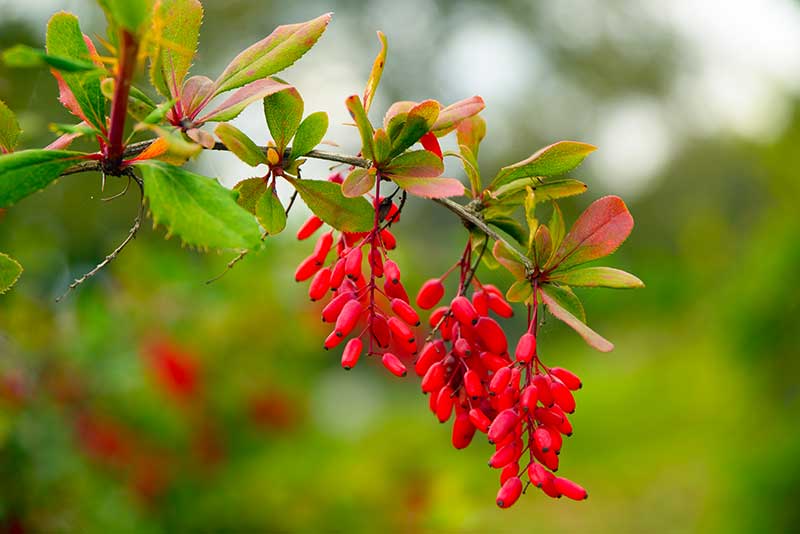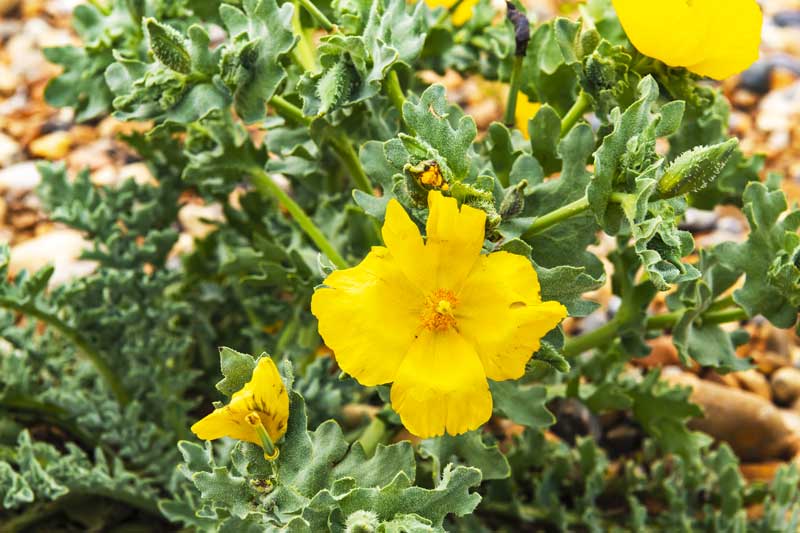Plants for Special Situations
DEER RESISTANT PLANTS

ANNUALS & HERBS
Rarely Damaged
- Ageratum
- Argyranthemum
- Bidens
- Cleome
- Dichondra
- Dusty Miller
- Flowering Tobacco
- Heliotrope
- Lysimachia
- Pot Marigold
- Rosemary
- Snapdragon
- Strawflower
- Sweet Alyssum
- Vinca
Seldom Severely Damaged
- Bachelor Buttons
- Basil
- Begonia Wax
- Borage
- Celosia
- Coleus
- Dill
- Lantana
- Lobelia
- Marigold
- Nasturtium
- Parsley
- Salvia
- Stocks
- Verbena
- Zinnia
BIENNIALS
Rarely Damaged
- Foxglove
Seldom Severely Damaged
- Forget-me-Not
- Money Plant
- Sweet William
BULBS
Rarely Damaged
- Daffodil
- Fritilia
- Hyacinth
- Ornamental Onion
- Snowdrops
PERENNIALS
Rarely Damaged
- Anise Hyssop
- Bleeding Heart
- Buttercup
- Catmint
- Christmas Rose
- Forget-Me-Not
- Globe Thistle
- Goldenray
- Horseradish
- Hyssop
- Iris
- Jack-in-the-pulpit
- Lamb’s Ear
- Lavender
- Lungwort
- Meadow Rue
- Mint
- Monkshood
- Ornamental Onion
- Peony
- Potentilla, Ciquefoil
- Rock Cress
- Rogers Flower
- Rose Campion
- Russian Sage
- Sage
- Silvermound
- Spurge
- Statice
- Thyme
- Yucca
Seldom Severely Damaged
- African Lily
- Anemone
- Asparagus
- Aster
- Astilbe
- Baby’s Breath
- Basket of Gold
- Beebalm
- Bergenia
- Black-Eyed Susan
- Blazing Star/Liatris
- Bunnera
- Butterfly Weed
- Candytuft
- Cardinal Flower
- Carnation, Pinks
- Columbine
Shrubs
Rarely Damaged
- Devil’s Walking Stick
- Barberry
- Butterfly Bush
- Boxwood
- Heather
- Daphne
- Russian Olive
- Heath Juniper
- Russian Cypress
- Pieris
- Potentilla
- Sumac
- Elderberry
- Viburnum
Seldom Severely Damaged
- Beautybush
- Bog Rosemary
- Bridalwreath Spirea
- Buchthorn
- Burning Bush
- Coralberry
- Cotoneaster
- Currant
- Deutzia
- Dogwood
- Firethorn
- Forsythia
- Japanese Flowering Quince
- Kerria Japanese
- Lilac Common
- Lilac Japanese
- Mock Orange
- Mugo Pine
- Privet
- Red Chokeberry
- Rose of Sharon
- Saucer Magnolia
- Sea Buckthorn
- Smokebush
- Snowball Bush
- Snowberry
- Spirea japanese
- Spireas
- St. John’s Wort
- Summersweet
- Sweet Elder
- Weigela
- Winterberry Holly
- Witchhazel Common
- Willow
Ferns
Rarely Damaged
- Christmas Fern
- Cinnamon Fern
- Hayscented Fern
- Holly Fern
- Japanese Painted Fern
- Ostrich Fern
- Sensitive Fern
ORNAMENTAL GRASSES
Rarely Damaged
- Blue Fescue
- Blue Oat Grass
- Feather Reed Grass
- Fountain Grass
- Giant Jap. Silver Grass
- Hakonechloa
- Japanes Blood Grass
- Japanese Sedge
- Japanese Sliver Grass
- Japanese Sweet Flag
- Northern Sea Oat
- Oriental Fountain Grass
- Pampus Grass
- Switch Grass
- Variegated Oat Grass
GROUNDCOVERS
Rarely Damaged
- Ajuga/Bugleweed
- Barrenwort
- Deadnettle
- Lily of the Valley
- Spruge
- Sweet Woodruff
Seldom Severely Damaged
- Creeping Wintergreen
- Lilyturf
- Periwinkle
- Coneflower
- Coralbells
- Coreopsis
- Coreopsis/Tickseed
- Crocosmia
- Delphinium
- False Indigo
- Feverfew
- Foam Flower
- Goldenrod
- Hardy Geranium
- Hens & Chicks
- Lady’s Mantle
- Lupine
- Maltese Cross
- Meadow Sage
- Milkweed
- Mullein
- Obedient Plant
- Pincushion Flower
- Plume Poppy
- Poppy Oriental
- Primrose
- Red-Hot-Poker
- Rhubarb
- Sea Thrift
- Snakeroot, Bugbane
- Sneezeweed
- Snow-in-Summer
- Soapwort
- Speedwell
- Spiderwort
- St. John’s Wort
- Toad Lily
- Trillium
- Trout Lily
- Violet
- White Snakeroot
- Wild Ginger
- Yarrow
TREES
Rarely Damaged
- Buckeye Bottlebrush
- Dwarf Alberta Spruce
- Katsura Tree
- Paper Birch
- Pine
- River Birch
- Spruce
Seldom Severely Damaged
- Ash
- Beach
- Birch
- Dogwood Kousa
- False Cypress
- Hawthorn
- Honey Locust
- Horsechestnut
- Maple
- Serviceberry
- Spruce
- Tulip Tree
- Willow
VINES
Rarely Damaged
- Devil’s Walking Stick
- Barberry
- Butterfly Bush
- Boxwood
- Heather
- Daphne
- Russian Olive
- Heath Juniper
- Russian Cypress
- Pieris
- Potentilla
- Sumac
- Elderberry
- Viburnum
Seldom Severely Damaged
- Beautybush
- Bog Rosemary
- Bridalwreath Spirea
- Buchthorn
- Burning Bush
- Coralberry
- Cotoneaster
- Currant
- Deutzia
- Dogwood
- Firethorn
- Forsythia
- Japanese Flowering Quince
- Kerria Japanese
- Lilac Common
- Lilac Japanese
- Mock Orange
- Mugo Pine
- Privet
- Red Chokeberry
- Rose of Sharon
- Saucer Magnolia
- Sea Buckthorn
- Smokebush
- Snowball Bush
- Snowberry
- Spirea japanese
- Spireas
- St. John’s Wort
- Summersweet
- Sweet Elder
- Weigela
- Winterberry Holly
- Witchhazel Common
- Willow
Salt Tolerant Plants

High Salt Tolerant Perennials
- Sea Thrift
- Karl Foerster Reed Grass
- Helen Allwood Pink
- Blue Lime Grass
- Fountain Grass
Moderate Salt Tolerant Perennials
- Powis Castle Artemisia
- Silver Mound Artemisia
- Elijah Blue Festuca Grass
- Hosta
- Sea Lavender
- Stella D’Ora Daylily
- Sedum Autumn Joy
- Lilyturf
- Coral Bells
Trees & Shrubs with High Salt Tolerance
- Green Ash
- Shademaster Locust
- Larch
- Colorado Blue Spruce
- Austrian Pine
- Ornamental Pears
- Aspen
- Red Oak
- Siberian Pea
- Junipers
- Honeysuckle
- Bridal Wreath Spirea
- Snowberry
- Lilacs
Trees & Shrubs with Moderate Salt Tolerance
- Silver Maple
- Paper Birch
- Catalpa
- Norway Spruce
- Basswood
- Shrub Maple
- Boxwood
- Forsythia
- Mockorange
- Firethorn
- Cranberry Viburnum
Pet Safe Plants

SAFE PLANTS
- African Violet
- Aluminum Plant
- Areca Palm
- Areca Palm
- Baby’s Tears
- Bamboo
- Boston Fern
- Bromeliads
- Burrow’s Tail
- Calathea
- Cast Iron Plant
- Christmas Cactus
- Climbing Begonia
- Echeveria
- Gerber Daisy
- Gloxinia
- Golden Cane Palm
- Goldfish Plant
- Haworthia
- Hens & Chicks
- Hibiscus
- Hoya
- Impatience Plant
- Majestic Palm
- Money Tree
- Orchids
- Parlor Palm
- Peperomia
- Pink Splash
- Polka Dot Plant
- Ponytail Palm
- Prayer Plant
- Rex Begonia
- Spider Plant
- Staghorn Fern
- Swedish Ivy
- Sweet Alyssum
- Venus Flytrap
- Yucca
- Zebra Cactus
HARMFUL TO PETS
May cause vomiting, diarrhea, irritation of the mouth. Most of the harmful plants depend on the amount of plant that is ingested, can go from moderate to severe
- Aloe Vera (Moderate)
- Amaryllis (Moderate to Severe)
- Asparagus Fern (Moderate)
- Chinese Evergreen
- Corn Plant (Severe)
- Croton (Moderate to Severe)
- Dieffenbachia (Severe)
- Elephant Ear (Moderate to Severe)
- English Ivy (Moderate)
- Hyacinths (Mild/Moderate to Severe if bulb is eaten)
- Jade (Can be Severe(Rare))
- Marijuana (Moderate to Severe)
- Norfolk Pine (Moderate)
- Peace Lily (Moderate)
- Philodendron (Moderate to Severe)
- Pothos (Moderate)
- Rubber Plant (Moderate)
- Schefflera (Moderate)
- Snake Plant (Mild to Moderate)
- Tulips (Severe)
- ZZ Plant(Moderate)
LETHAL PLANTS TO PETS
Can cause damage to the kidney’s or liver, also can cause death
- Anthurium
- Autumn Crocus
- Azalea
- Azaleas
- Calla Lilly
- Castor Bean
- Cyclamen (Root can cause death)
- Day Lilly
- Easter Lilly
- Foxglove
- Hyacinth
- Hydrangea
- Japanese Pieris
- Larkspur
- Lillies
- Morning Glory
- Narcissus (Bulb most poisonous)
- Oleander
- Sago Palm
Plants for Wet Areas

BLACK CHOKEBERRY
BLACK CHOKEBERRY (Aronia melanocarpa)
Black chokeberry is a deciduous bush that grows to around 3 to 6 feet in height and spread. In the spring, it bears showy white blooms that give way to small black berries, which attract birds. Its foliage turns a reddish-purple in the fall.
ARROWWOOD VIBURNUM
ARROWWOOD VIBURNUM (Viburnum dentatum)
Arrowwood viburnum features showy white blooms in the late spring, followed by dark blue berries. Its green leaves turn to shades of red, orange and yellow in the fall. This shrub can reach around 6 to 10 feet in height and spread. Can be pruned to shape it just after flowering.
WINTERBERRY
WINTERBERRY (Ilex verticillate)
Winerberry is native to swampy parts of eastern North America. Thus it prefers to grow in loamy, moist, acidic soil and can tolerate poor drainage. The shrub can reach around 3 to 12 feet in height and spread.
INKBERRY
INKBERRY (Ilex glabra ‘Densa’)
Inkberry also is native to eastern North America, where it’s often found surrounding swamps and bogs. This evergreen shrub can reach around 5 to 8 feet in height and spread, and it produces black berries in the early fall if plants of the opposite sex are growing near one another. These shrubs generally need minimal pruning, but any shaping should be done in the early spring before seasonal growth begins.
WILLOWS
WILLOWS (Salix)
There are many different types of willows to choose from and most all are very good for wet areas. Some examples are:
- Dappled Willow (Salix Hacuro-Nishiki) This Japanese dappled willow is noted for its striking white-green-pink foliage and grows approximately 4-5 ft in height and spread.
- Pussy Willow (Salix discolor) Pussy willow is a wetland shrub found growing throughout North America in meadows and swamps. These shrubs produce charming furry catkins in early spring and can reach 6 to 15 feet tall with a 4 to 12 foot spread.
SUMMERSWEET
SUMMERSWEET (Clethra alnifolia)
Summersweet grows in wet woodlands and marshes, as well as along streams and seashores. During the summer it produces long fragrant flower spikes that tend to attract butterflies and bees. It reaches around 3 to 5 feet tall and wide. Prune as needed in late winter.
PIGSQUEACK
PIGSQUEACK (Bergenia cordifolia)
Pigsqueak is a perennial that’s primarily grown as a ground cover. It has big shiny, paddle-shaped leaves surround a sturdy, 16 in stalk that bursts into exuberant pink or sometimes white flowers with dark centers. Reaches 1 to 1.5 ft in height and spread.
LEOPARD PLANT
LEOPARD PLANT (Ligularia ‘Britt-Marie Crawford)
The leopard plant is a great option for wet and shady areas. Its showy yellow-orange flowers, which bloom in early summer, are similar to daisies. Its large leaves are an interesting dark purple with some green tones. This plant only reaches around 2 to 3 feet tall with a slightly smaller spread.
JOE PYE WEED
JOE PYE WEED (Eupatorium maculatum)
This perennial commonly reaches around 4 to 5 feet with a 2-foot spread. It bears fragrant mauve flowers in the summer that tend to attract butterflies. Cut close to the ground in late winter to promote fresh growth.
CARDINAL FLOWER
CARDINAL FLOWER (Lobelia cardinalis)
This lovely native perennial species is an excellent plant for moist to wet sites. Very tall, upright spikes of true fire red flowers are presented atop the green foliage and are useful for adding color late in the season. Attracts hummingbirds and butterflies.
FERNS
FERNS
Many different ferns can tolerate excessive moisture in the ground and they can be planted at the edge of ponds or very wet areas. There are some ferns, such as Christmas fern, that need dry shady areas, but any of the following ferns will thrive in damp conditions: Cinnamon, Ostrich, Lady, Painted, Marsh, Holly.
LILY OF THE VALLEY
LILY OF THE VALLEY (Convallaria majalis)
Fragrant, white, bell shaped flowers followed by tiny, orange berries with tulip like leaves. Excellent ground cover.
Delivery in the Saint John area
*cost depending on location.
